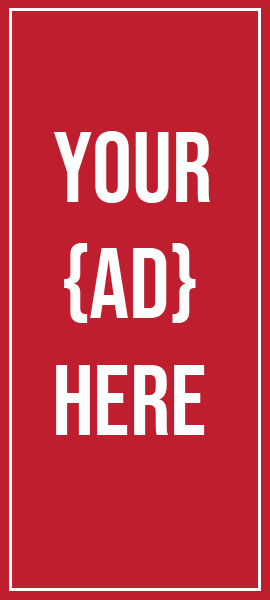
Collaborative Business Writing Explained
Alone we can do so little – but together we can do so much.
– Helen Keller
Introduction
In common parlance, the term “collaborative writing” refers to the production of a project or piece of work that is the result of the combined efforts of more than one person. It has been especially beneficial in many firms that encourage employees to work together on a project or require a huge task to be divided into smaller portions in order to be completed on time. Both of these scenarios make it more likely that employees will utilize the software. After all of the workers have completed their tasks, a group leader or editor will work to put all of the components of the work or project together to create the finished product.
Defining the Purpose in Greater Detail
When working with others on a project, it is essential to define its purpose and determine what tasks must be carried out before the project can be considered successful. Some objectives will not only describe the necessary components that need to be finished, but they will also specify which employee is responsible for finishing each component. Because it might be challenging to get started on writing in collaboration with others, it is better if all participants are aware of their respective responsibilities and are working toward a common goal. When the goal has been defined and each member of the group is aware of their responsibilities, the group will be able to take advantage of the shared resources, authority, and eventual benefits that result from their combined efforts.

Determine the goal by asking yourself:
Why are we undertaking this project?
What are the goals that we want to achieve?
Which aspects or components of the project need to be paid attention to?
Which procedures need to be carried out as part of the project?
Brief check
The term collaborative writing refers to initiatives in which numerous people work together to create written works rather than independently.
Approaches to Writing That Are Actually Useful
The usage of collaborative business writing has become an invaluable instrument for improving the design of group processes and procedures that are implemented within an organization. Because of this, collaborative writing has emerged as an effective method of writing that a growing number of businesses are beginning to implement for their staff members. In work settings that encourage collaboration, each employee has the opportunity to make a contribution to the overall project, as well as the flexibility to edit or amend their own work as appropriate. In many collaborative groups, employees are permitted to offer feedback on or edit one another’s work, so facilitating the generation of additional perspectives and ideas at all stages of the project. Because the process of collaborative writing can be done nearly anywhere, it is easier for employees to include work from a range of locations, such as those located across the state, the nation, or even the world. This is because the process of collaborative writing can be done practically anywhere.
Benefits:
Improves collaborative processes
Improve the level of communication between members
Edit/peer review project segments
Increase the amount of contributions from a variety of parties.

Approaches to Cooperative Writing in Teams
Many diverse approaches to collaborative writing are available to businesses, and these approaches can be tailored to meet the specific requirements of the project that needs to be finished. There are methods that rely on a small group of workers concentrating their efforts on a single component at the same time. There are also other options, such as having multiple staff work on projects in separate roles and then combine their efforts later.
The scale of the project, the number of personnel who will be working on it, and the type of deadline that will be imposed on the project are some of the elements that will guide a company’s decision regarding which approach to implement. The following are some examples of writing strategies that will be further discussed:
Parallel construction
Writing in a sequential fashion
Writing that is integrated
Patterns of Cooperative Writing Effort
The manner in which personnel will cooperate with one another in order to finish the project is referred to as the “pattern” in this context. These patterns can be utilized either in conjunction with a predetermined collaboration strategy or on their own as a stand-alone instrument. The mode of cooperation that will be utilized will center on determining which members of the team will be responsible for which tasks and how the remaining members of the team will contribute to the achievement of the overarching objective.

In certain patterns, a single employee is responsible for carrying out a task, such as developing an outline or revising the work of colleagues, but in other patterns, multiple employees must collaborate on a single activity in order to see it through to completion. The manner in which the team works together is determined by a variety of elements, including the nature of the project at hand, the number of team members that are available, and the specific skills possessed by each individual member of the team.
Brief check
Collaborative writing is also a method for educating new authors to write or for experienced writers to expand their creative potential into styles that would be more difficult for each writer working alone.
Common collaborative patterns:
The project is planned and outlined by the group as a whole, and then each individual employee is responsible for completing their particular portion of the work, which is then assembled into the whole.
A first draught of the project is planned and written by a single member of the group, while the others in the team are responsible for further revisions.
The team collaborates on the planning and writing of the draught as a group, and then one or more members of the team revise the document independently of the others.
While another person transcribes and edits a final draught, another member of the group will be responsible for dictating various elements of the project.
Practical Application
Jocelyn has been tasked with writing a proposal that offers suggestions for ways to improve employee proficiency, and her co-workers in the department have requested that she involve them in the process of writing the presentation.
Jocelyn was aware that it would be most effective for them to work together on the writing aspects of this project. She had high hopes that if she and her co-workers collaborated on the proposal, it would produce ideas for it and make the process of putting these ideas into words more streamlined. She employed a method of writing that required separate effort from each employee, followed by the reassembling of the parts into the whole. On the basis of this pattern, she reached the conclusion that she would be able to oversee the project’s outline while also editing the work that each employee contributed to produce the final proposal.
When Jocelyn utilized this method of writing in which she collaborated with her co-workers, she was able to obtain a variety of perspectives from the division. This proved to be an exceptionally helpful aspect of the process because it included the perspectives of individuals who were the focus of the proposal in question. As soon as she had collected all of the information, she was prepared to provide an orderly presentation of it to the management board.





